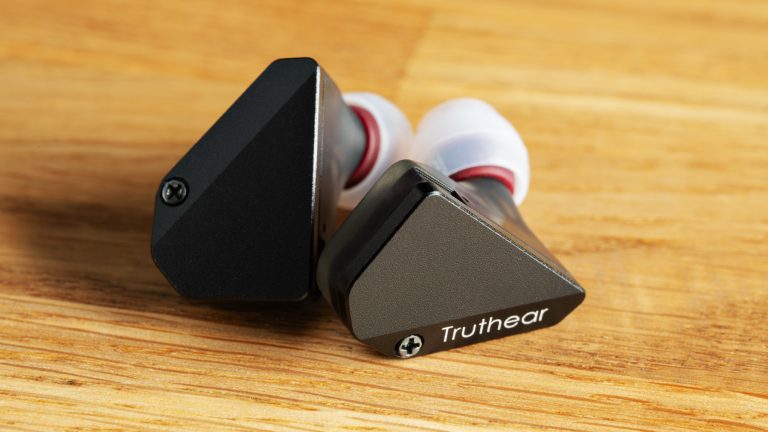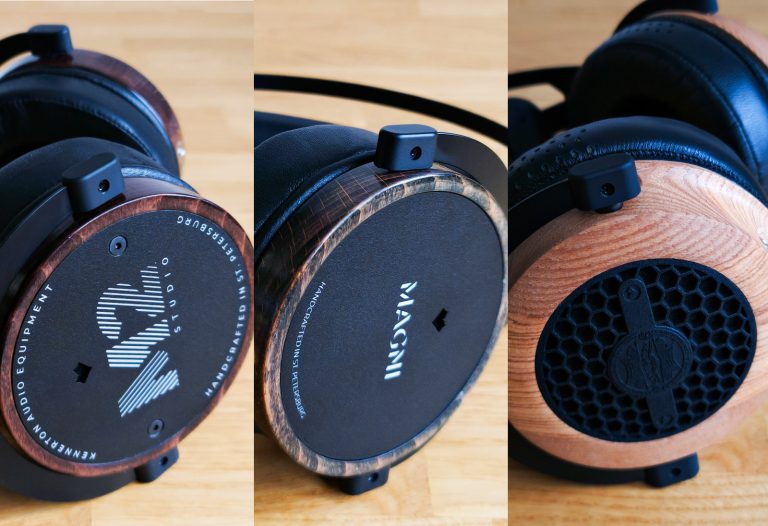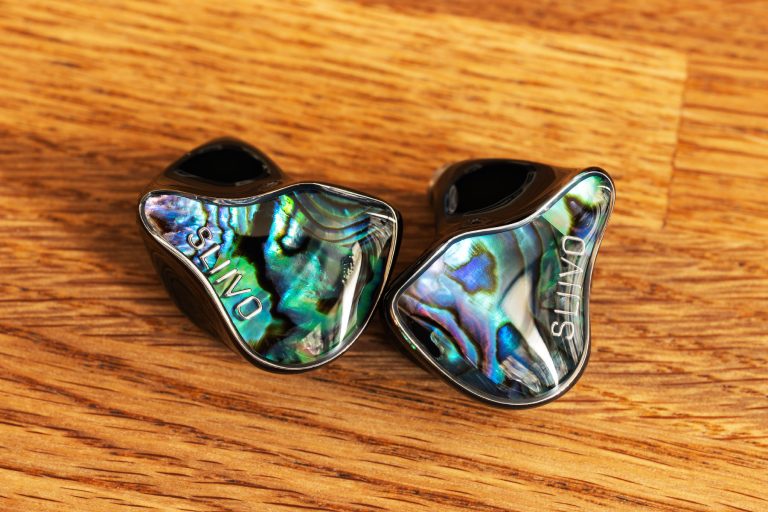Kennerton Arkona Headphones Review. The bee’s knees
I dropped into the Kennerton office, and they’ve got some specialties: closed-back Arkona and open-back Vinneta. Both headphones models use a new driver. I immediately dragged them home to write a review. Today we’ll talk about Arkona, closed-back planar headphones for $3,277.
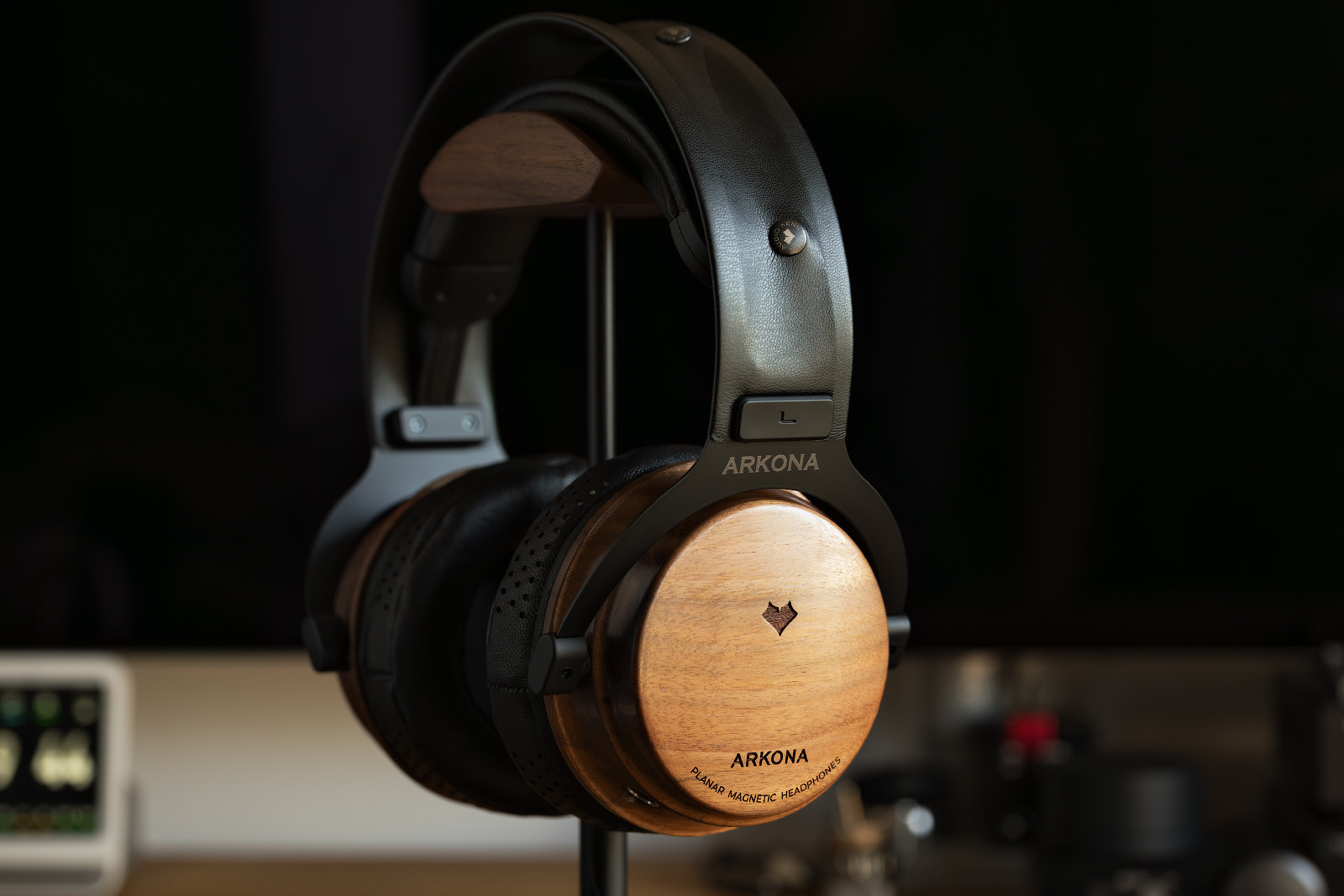
What’s included
The set is standard for the Premium segment of Kennerton headphones. So, what’s in the box besides the headphones themselves?
- An eco-leather bag for convenient transportation with a shoulder strap and cable compartment;
- A 2-meter cable with a 6.3 mm TRS connector, rigid enough;
- A soft extra bag with Saint-Petersburg branding;
- A Kennerton headphones catalog in form of separate postcards;
- A warranty sheet indicating a quality assurance engineer;
- A frequency response sheet;
- A wood- and leather-scented sachet.
You can see how it all looks in the Heartland Dynamic review, for example. The set is superb.
Quick specifications overview
- Design: over-ear, closed-back.
- Driver type: planar, based on a paper membrane.
- Membrane diameter: 80 mm.
- Impedance: 24 Ohms.
- Sensitivity: 89 dB/MW at 1 kHz.
- Connectors: miniXLR.
- Weight: 558 g without cable.
Design, assembly, technology
The main feature of Arkona is a new unique driver created in the depths of Kennerton. But who can tell about the driver really well? Only its original creator. Meet Andrey Ryazanov, a Kennerton point man on drivers.
I.B.: Hello Andrey! What kind of a new driver have you got?
A.R.: This is the one that we’ve been developing for the last 3 years. You heard the prototypes.
I.B.: Yeah, I do remember.
A.R.: Well, we’ve finished and mass-produced it. The initial task was to create a driver that would have the advantages of conventional planars, for example, ‘crispy’ upper range and features that are typical of the speakers – ‘fast’, ‘kicking’ basses. If you look at the frequency response graph of the planars, there are always many ‘ticks’, or very narrow dips and rises in the upper frequencies, and this is because the membrane is going from pillar to post, because it has no stiffness. Whoever says that they’ve managed to make a membrane that creates a flat wave front – no, it doesn’t work with a thin membrane. Its sound is zonal, that is, it vibrates not as a whole, but in parts. There are parasitic side sounds, resonances, and so on. This effect must be minimized.
We experimented with various materials and decided on paper. Distortion was negated with the fibrous nature of paper. Roughly said, unnecessary oscillations in use are converted into frictions of paper fibers.
I.B.: Does it mean that the paper membrane should run hot?
A.R.: It’s actually not a problem because the membrane effectively cools itself when oscillating during sound reproduction. Talking about our very membrane, it can withstand nearly 300 degrees Celsius. In early prototypes, I soldered wires right to the tracks on it, and the membrane didn’t even caramelize.
I.B.: Yet all manufacturers love being engaged in a membrane-measuring contest to see who has the thinnest one. So, how thick is yours? Isn’t paper thicker than Dacron?A.R.: Our paper membrane is 30 micron thick, which is nearly as heavy as a 20 micron thick polyimide membrane. Again, the thickness provides increased rigidity, which eliminates ‘fractures’ of the radiating surface, especially in the range after 1 kHz. To make it even more rigid, we corrugate it in the plane where the greatest irregularities of the magnetic field are observed.

The simple reason is that magnets alternate with empty space anyway, so some areas of the membrane are affected by stronger forces and some others by weaker ones. This is what we are fighting by increasing the membrane rigidity, as well as by special topology of the conductive tracks: more voltage is applied to areas more distant from the magnets; respectively, the tracks near the magnets are weakened. Such an obvious solution has never been claimed by other manufacturers. We might have been first to come up with it.
I.B.: Got it. Then the next question arises: what’s the effective diameter of the membrane in the light of this approach to the membrane construction and the arrangement of tracks and magnets? Which part of it is immediately responsible for sound reproduction? I suspect that this is not 100% of its area.
A.R.: Approximately 52×52 millimeters. This is an area without regard for corrugation, the area of projection onto a plane. If you ‘smooth out’ the corrugation, you’ll get a larger area.
I.B.: And if we talk about the amplitude of oscillations, can you name any figures?
A.R.: Due to corrugation and other tricks, this is 4 mm at the maximum, and plastic deformation occurs after that.
I.B.: That’s way too much for a planar driver!
A.R.: Yes, this is a lot, but this is an abnormal operating mode, this is exactly the peak value, the elastic limits. And, in order to get that amplitude, we used the following approach: the membrane is fixed rigidly from above and below and through a soft suspension on the sides. The suspension is what gives the membrane a greater stroke, which is important for reproducing elastic but powerful low frequencies. While the membrane used to be able to move 0.5 mm forward and backward in our headphones, the new driver gives freedom of movement by ±1 mm.
I.B.: Yet the paper membrane still has some pain points, hasn’t it?
A.R.: Only the fear of moisture, which we partially corrected with the help of various impregnations.
I.B.: Do you mean by ‘partially’ that the membrane can literally get wet?
A.R.: Yes, it can, but then it will release moisture into the environment and restore its properties, tension, and mass. The maximum operating humidity of the new driver is about 70%, and subbass distortions appear if it’s exceeded. But it’s not difficult to dry the membrane either: you just have to… wait.
I.B.: Okay, so, paper as a membrane material, corrugation, track position design, a soft suspension in a planar driver – this is already an ample list of innovations. But I’ll ask anyway: is there anything else interesting in the driver?
A.R.: Yes, there is, but I may not tell you about it as the requests have been filed with the patent office. I can only tell how these secret improvements affected the sound. Closed-back planars usually have a slightly excessive lower middle section, including our headphones. In Arkona, the lower middle is delicate, the lower frequencies are separated and ‘kicking’ in a good way, and the middle is just normal, articulated, not ‘sunk’.
I.B.: Can you tell anything interesting about the earcups?
A.R.: Come to think of it, no, I can’t, because the driver turned out to be virtually in no need of complex acoustic design. The only feature is the enlarged ‘air intakes’ in Arkona: there are two of them, unlike in Rognir, for example. This driver needs more air.
I.B.: Do you have any plans to use new drivers in other models?
A.R.: Yes, we do. There is a plan, firstly, to achieve the driver’s resistance to humidity and to use it further in new headphones models. And, secondly, we began developing active desktop speakers based on this driver. Of course, not only these drivers will be there, but they will definitely be responsible for the ‘middle’ and ‘top’. I can’t say anything more yet.
I.B.: And my last question is about the country of origin of the driver components. Is everything Russian?
A.R.: We only buy magnets in China, and all the rest is Russian. But magnets are made in our country, too, so we may switch to domestic magnets soon.
I personally have nothing to add here.
As for the design, Arkona uses a self-adjusting headband typical for Kennerton, and the earcups are made of wood. Though there was time when you could pick faults in the overall production quality, polishing or something else, now, in 2024, models from the company’s top line are made just filigree. There are no chips, uneven lettering, jagged holes for connectors, etc. And, as a reminder, the varnish is no longer used — only mineral oil. The pictures speak volumes about it.
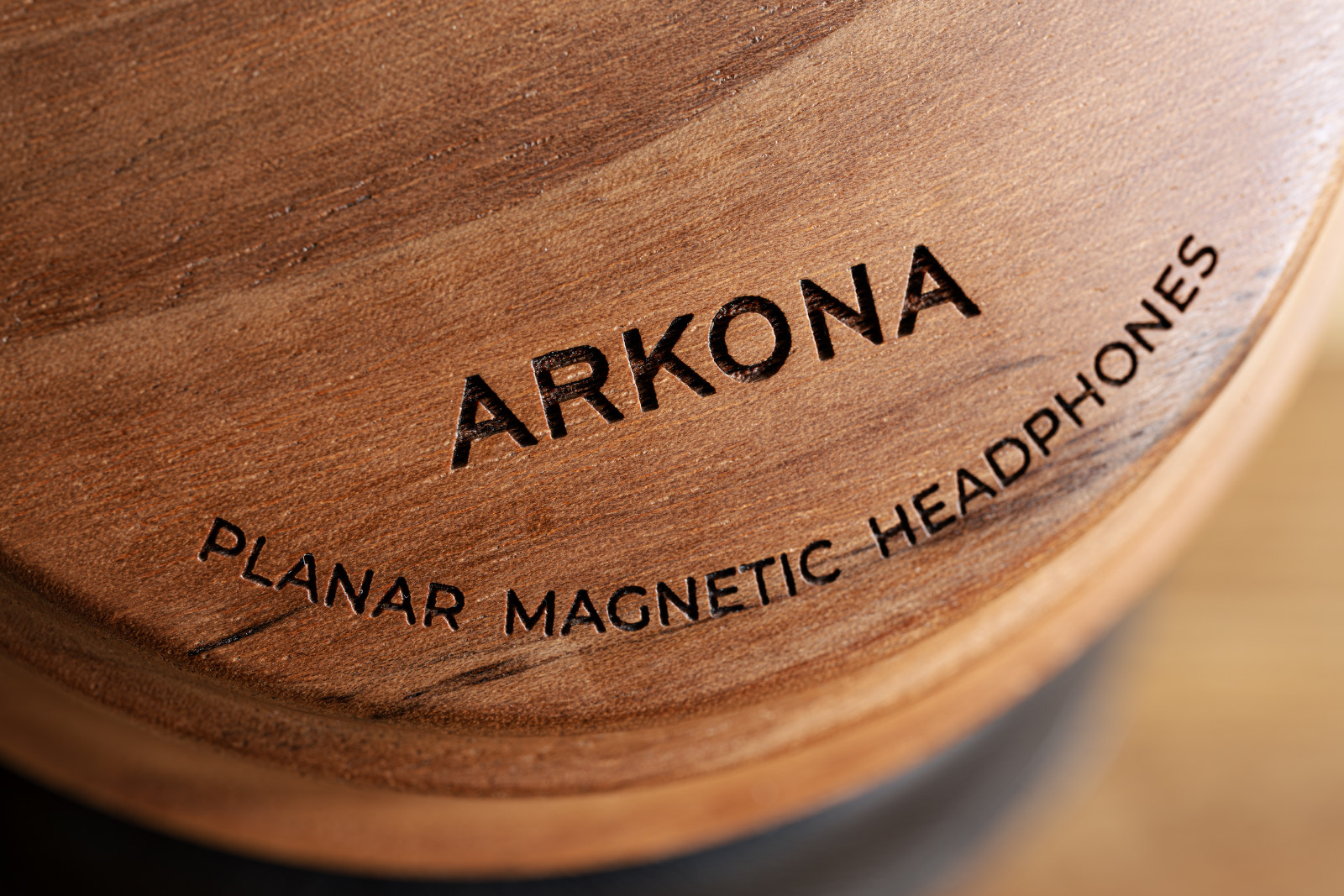
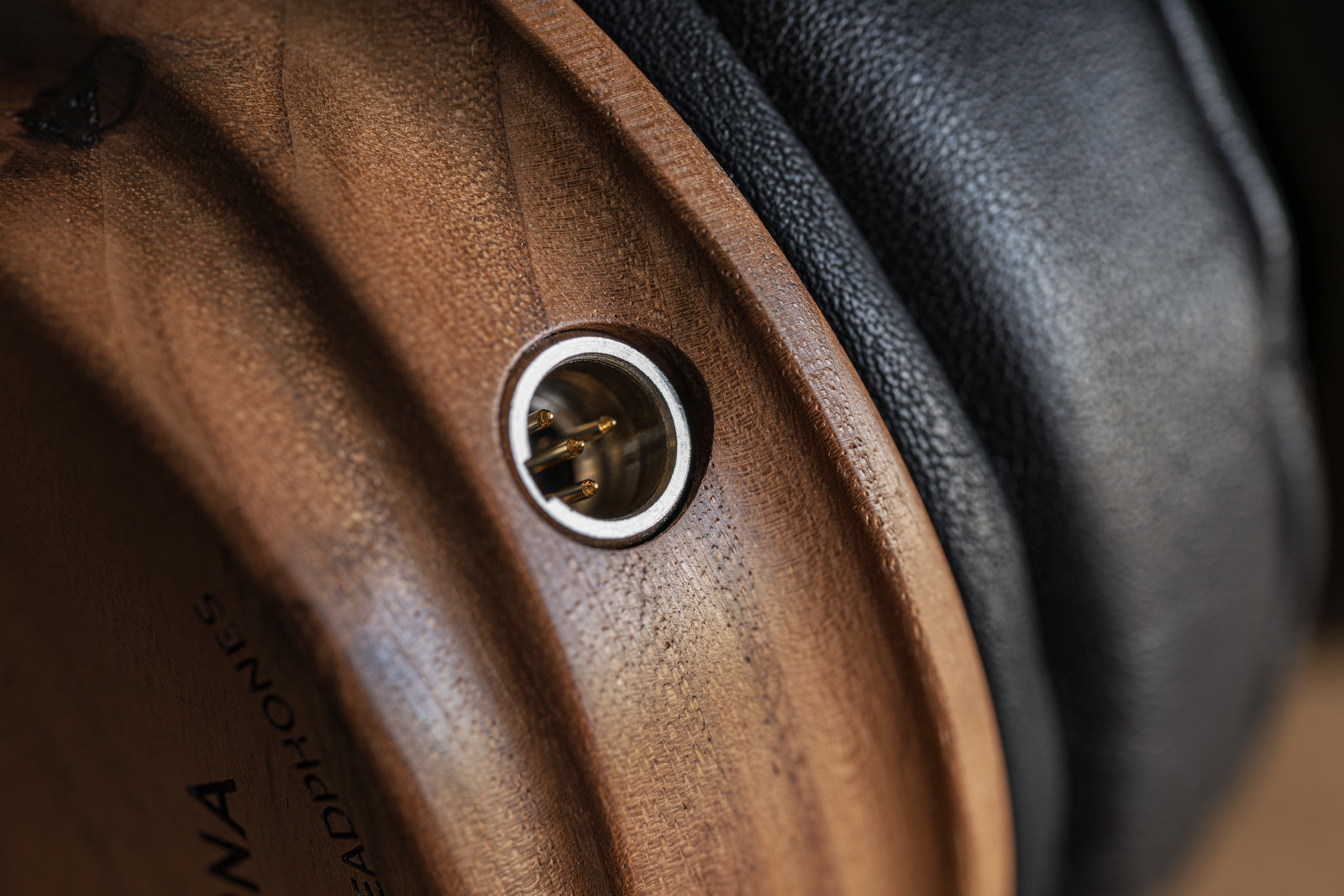
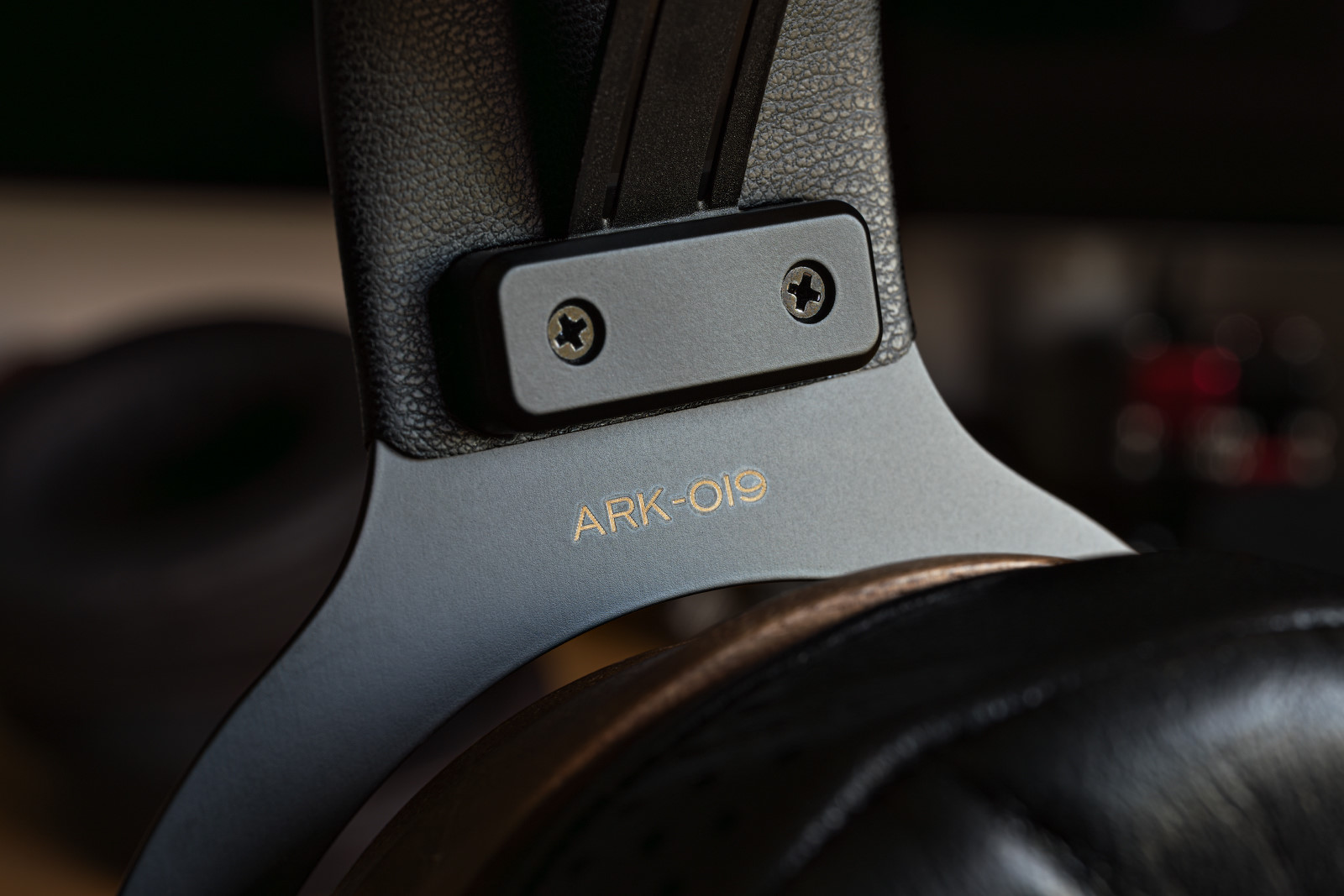
By the way, here are those two ‘air intakes’ that Andrey was talking about.
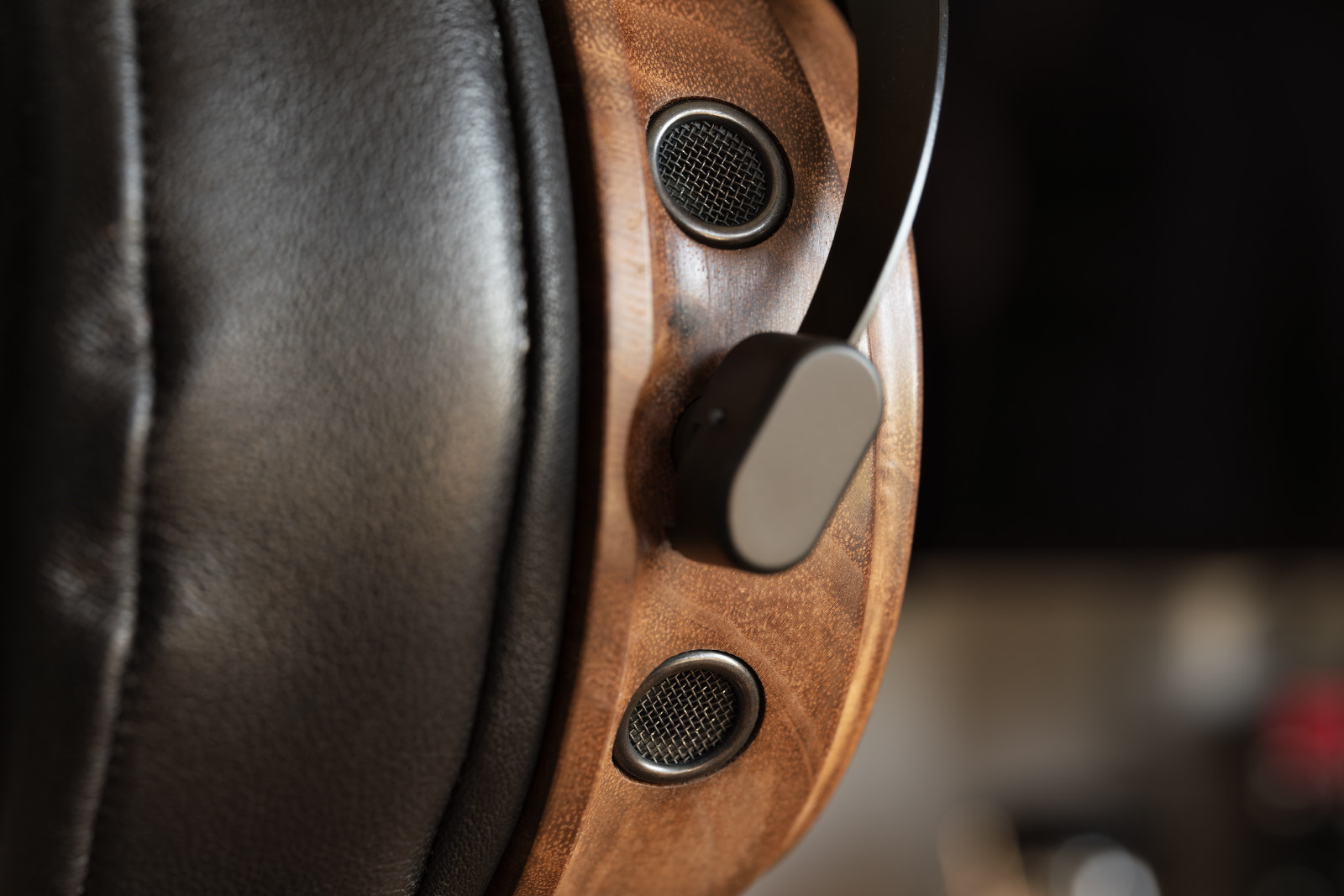
The earcups do not rotate vertically, but the pressure and the thickness of the earpads are fitted in such a way that I doubt the existence of a human head on which Arkona would ‘sit’ uncomfortably or loosely.
Ergonomics
The usability corresponds to the level of other expensive Kennerton models, such as Rognir or Heartland. That is, this very usability is at a very high level, if not at the highest one. I spent 8 hours without a break with Arkona on, as easy as pie.
My only complaint is the weight: it’s objectively heavy. The weight of Dan Clark Audio E3 is 455 g, or 100 g less than Arkona. But ZMF Caldera Closed’s weight is already from 535 to 585 g, i.e. comparable. It would definitely be nice to have something about 400 g, but, apparently, this is not yet technologically possible.
Note also that the headphones do not provide substantial sound insulation. Probably, this is a consequence of using two compensation holes. From what I can feel, it would be correct to call this model semi-open.
I have no other complaints about the ergonomics.
Subjective sound impression
Arkona sounds amazingly good, without any exaggeration, at the “JESUS FUCKING CHRIST!!!11” level. The sound is ‘wide’, ‘large’, there’s a lot of ‘air’, the music is very dynamic.
The subbass is a combination, if I may say so, of ‘heavily-armed speed’ and ‘dynamic punch’. As I understand, the new driver was designed to get exactly this mannerism in the lower part of the frequency range: Arkona can reproduce low tones very sharply and quickly. My ears can hear the rise on subbass, but that’s not what matters – it’s the dynamics that is remarkable. And it’s just amazing both in general and for the case of closed-back planar headphones in particular. Highly recommended for fans of speed metal and other sorts of drums and guns.
The range around 250 Hz is slightly suppressed so that the subbass could have a more palpable punch. And this is an absolutely legitimate move, which also increases the sense of dynamics. If nothing else, look at the Harman curve.
The midrange is moved up to the listener incredibly close, the headphones play ‘right in the face’, but very smoothly and accurately at the same time. This attaches aggression and intimacy to the sound delivery, but, on the other hand, the mid-frequency range delivered this way can dominate in some tracks. The frequencies in the 3-5 kHz range are clearly raised just above normal. You can find tracks where the body of the musical flow will fall on this very frequency range (for example, ‘bare’ female vocals) – then this feature becomes articulated, and the sound becomes a bit unnatural. Personally, in almost 40 hours of listening, I found 2 tracks of this kind, and that’s that.
The upper frequencies after 10 kHz … I don’t really understand by ear what the frequency response will look like, but there are a lot of upper frequencies to the extent that provides sound airiness, but doesn’t jar on your ears. Rustling where necessary, sharp where necessary, the upper frequencies let you hear the harmonics of violins, whispers out front, and all the other finer points for which I love good headphones so much. This is the case, a very rare one, where, after listening to familiar tracks in headphones, you can definitely say, “I haven’t heard this before.”
The flip side of the coin is the limitless insistence on high standards of recording quality.
I’ll stress it: all of the above are not ‘tuning errors’, rather they’re tiny features that I see right to note in the review of headphones of this value — that is, I’m caviling, nitpicking, and putting the sound under a magnifying glass.
Special mention should be made of the feeling of ‘sound outside the headphones’ that often occurs when listening when you can’t clearly determine whether what you hear is part of a track or an external sound from the street, from another room, etc., i.e. whether it is internal or external in the context of the headphones. With Arkona, this pleasant misunderstanding occurs particularly often and once again emphasizes very high realism of communication of well-recorded, mixed, and mastered material.
As a result, Arkona sounds very wide and voluminous, wider than most open-back models. Both the width and depth of the sound stage are conveyed reliably and accurately. Overall sound description: neutral sound delivery with extremely dynamic and weighty subbass, a large amount of ‘air’ (frequencies after 10 kHz), and an accentuated midrange.
Sound source choice
The headphone sound with different sources was assessed using a cable for quick reconnection to them. The volumes of all sources were preliminarily aligned (by means of the measuring rig) at 94 dB, at 1 kHz. All software sound processing algorithms were disabled on the sources.
To write a review, I asked Kennerton for their new Amber Ray transistor amplifier.
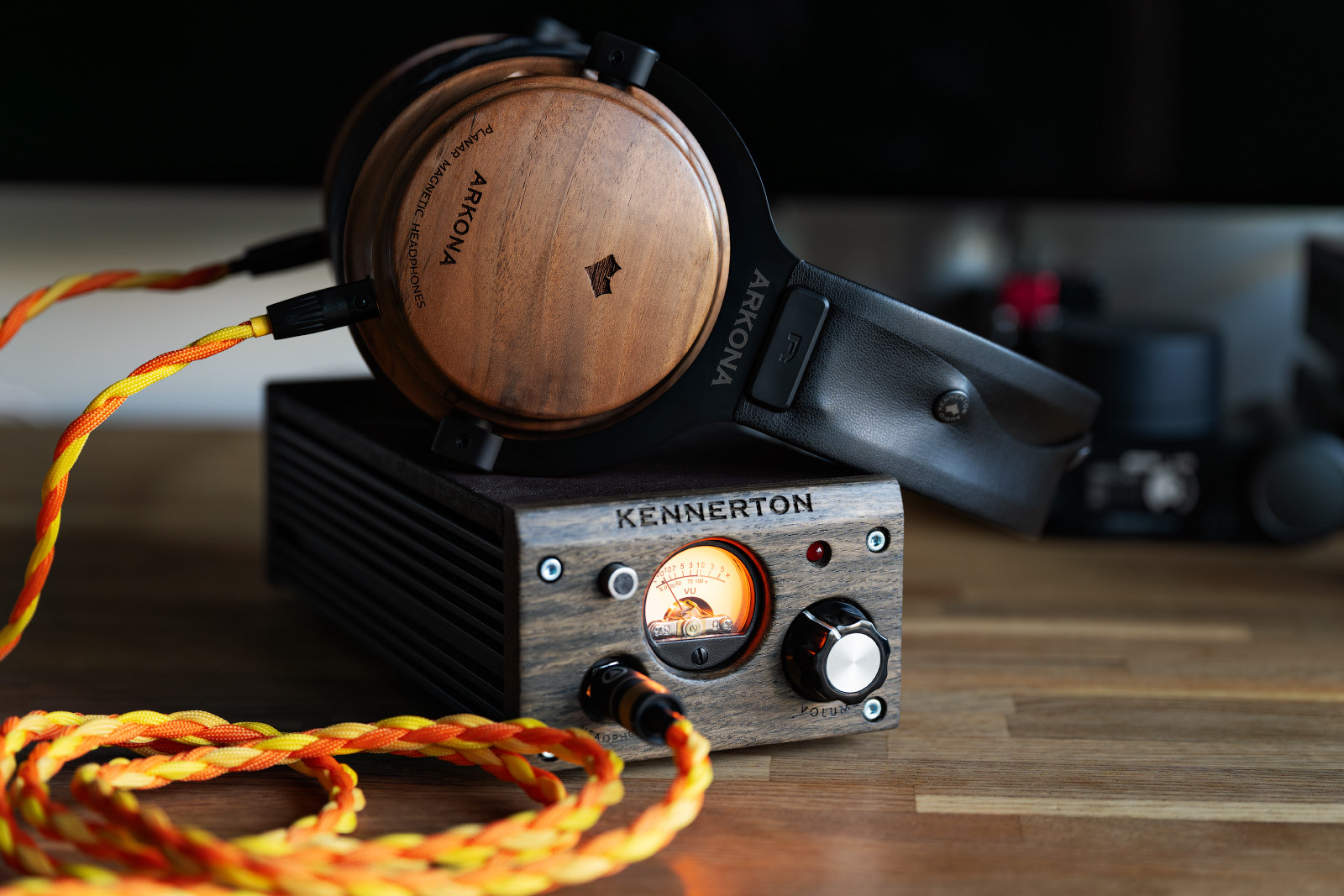
The amplifier operates class A, has two RCA inputs and one 6.3 jack output. The manufacturer provides the following characteristics of Amber Ray:
- Output power: 282 MW / 32 Ω.
- SNR: > 110 dB.
- THD: 0.011% at 250 MW / 32 Ω.
- IMD: 0.003% at 250 MW / 32 Ω.
- Channel separation: > 80 dB at 1 kHz / 32 Ω.
- Net weight: 1.3 kg.
- Dimensions: 107×70×220 mm.
- Price: $1,400.
In other words, it’s an expensive high-class headphone amplifier. I haven’t tested it; I might come up with a separate post about it one day.
In addition to Amber Ray, I used the following sources:
- RME ADI-2 DAC fs in ‘High Power’ gain mode – unbalanced connection;
- PC + RME ADI-2 DAC fs (+13 dB at the line output) + Topping A90 (Middle gain) – balanced connection;
- Hiby R6 III player in ‘Amplifier Operation’ = ‘Class A’ and ‘Gain’ = ‘High’ mode – balanced connection;
- Moondrop Golden Dawn portable DAC in Gain = High mode – balanced connection.
To ensure a sound pressure of 94 SPL, you need to set the volume:
- RME ADI-2 DAC fs in ‘High Power’ gain mode — to -29.5 dB;
- PC + RME ADI-2 DAC fs (+13 dB at the line output) + Topping A90 (High Gain) – A90 volume is set at the 11 o’clock position with the output level at 0 dBr on ADI-2 DAC;
- Hiby R6 III – to 56%;
- Moondrop Golden Dawn – to 54%.
The main subjective conclusion is that Arkona demands a lot of power. When there is not enough power, and this is the case of, for example, Golden Dawn and R6 III, the sound loses its dynamics and develops a shrilly, sibilant nature. There is no such effect on ADI-2 DAC, A90, and Amber Ray (with ADI-2 DAC as the source), the headphones’ sound is just godlike, as I described above.
Personally, I liked RME ADI-2 DAC teamed with A90 and Amber Ray most of all – they sound equally to my ear, that is, equally splendid.
Measurements
To make measurements, the headphones were connected to RME ADI-2 DAC (SD Sharp filter). The measurements were made using a rig conforming to the IEC60318-4 standard, with a KB501X auricle and auditory canal simulator. For each of the earcups, the measurements were made until 5 consistent measurements were obtained for the left and the right channels; any deviant measurements were excluded. The smoothing is indicated on the graphs.
And I’m glad to share the news — I have updated my measuring rig. Now I’ll use a correct auricle simulator: while the old rubber ear had a simplified geometry, Shore A20, and corresponded to the simplified version of the T-REC P.57 standard, the new ear has a complex realistic geometry, Shore 35 OO, and is a replica of GRAS KB5000 Anthropometric Pinna.
In short, the measurements became much more accurate at frequencies after 1000 Hz, and I no longer need to use the correction curve. I’ll write a separate post about updating the rig later. At the moment, I only have the left ear, and the right one is still on the way to me. Therefore, the measurements below are only for the left earcup, and there is no comparison of volumes of the right and left channels.
So, the frequency response of Kennerton Arkona:
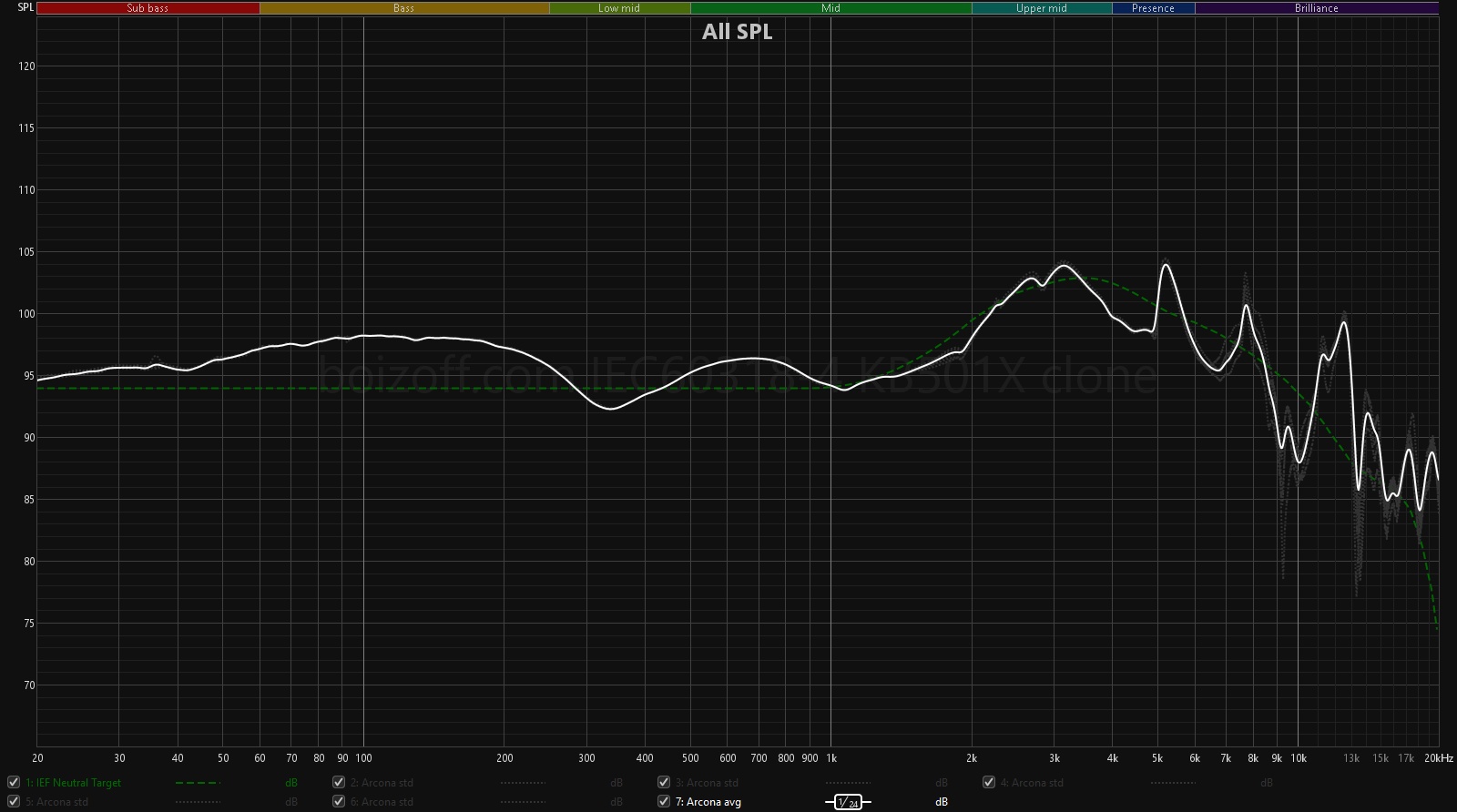
Here’s the dependence of the frequency response on the linear shift up and down. It’s difficult to say which option is better: in any case, one segment of the frequency response curve becomes more even, while the other sticks out or slumps.
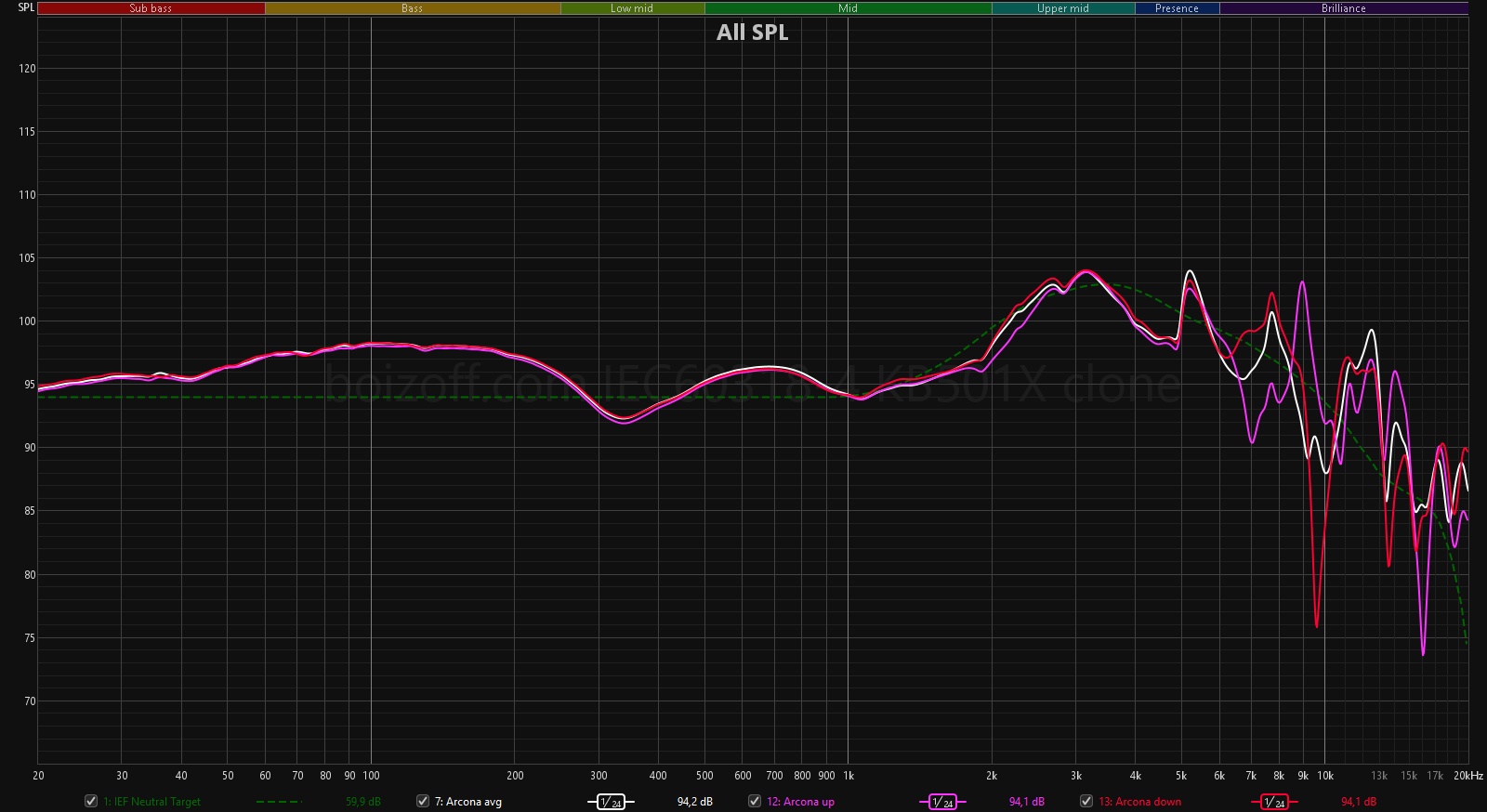
Here’s the dependence of the frequency response on turning earcups forward/backward. Turning them forward somewhat whips the range around 7 to 10 kHz into shape. I would recommend this particular wearing option.
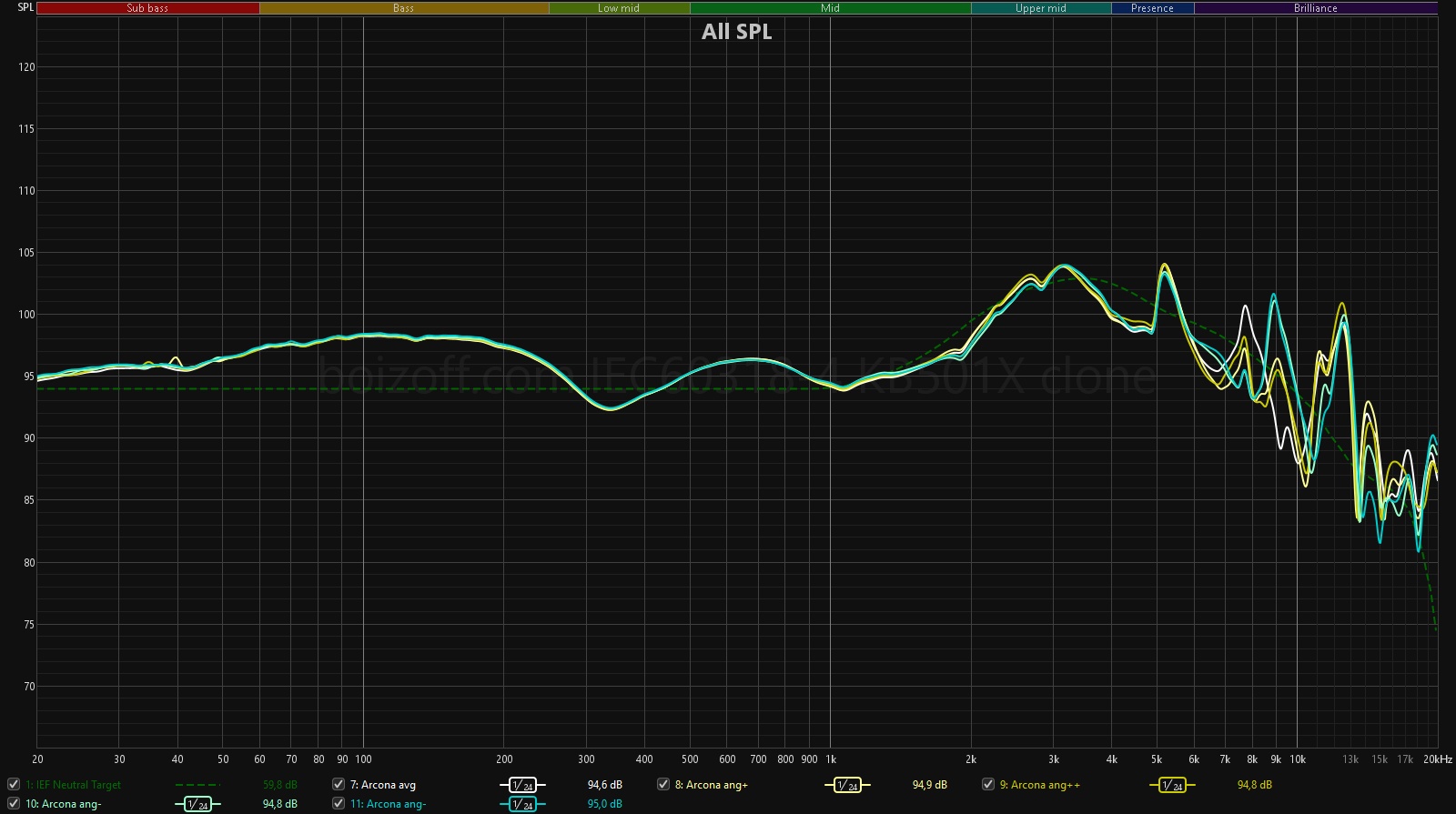
Here’s how the frequency response depends on the earcup pressure. A stronger pressure muffles the peaks at 5.2 and 7.8 kHz, but there is a dip at 14 kHz.
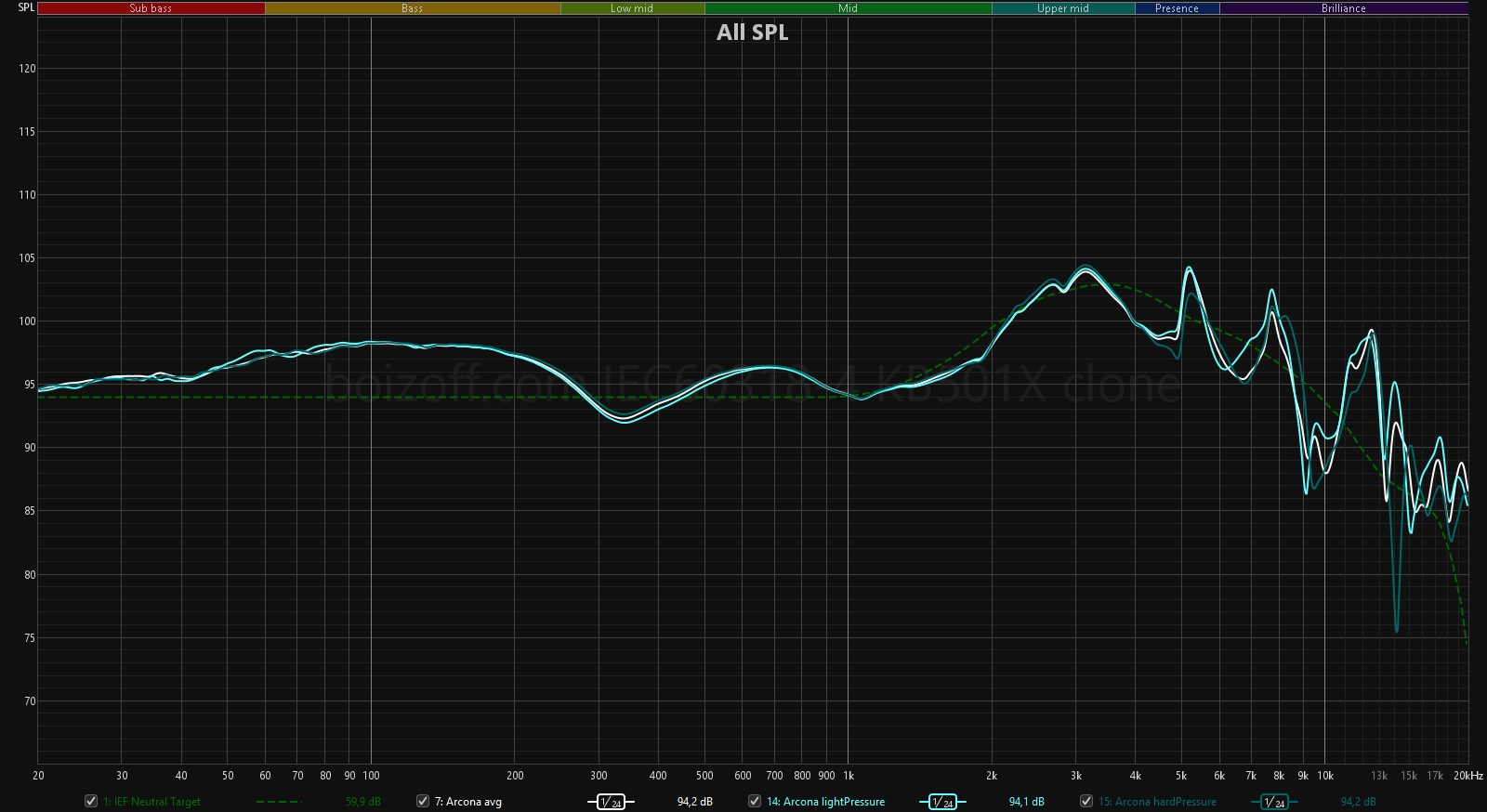
Distortion at 94 dB volume. In fact, the distortion is kept below 0.2%, which is a brilliant engineering result. And in the range from 100 to 300 Hz, where there is a rise in the frequency response, the distortion goes to the level of 0.1%.
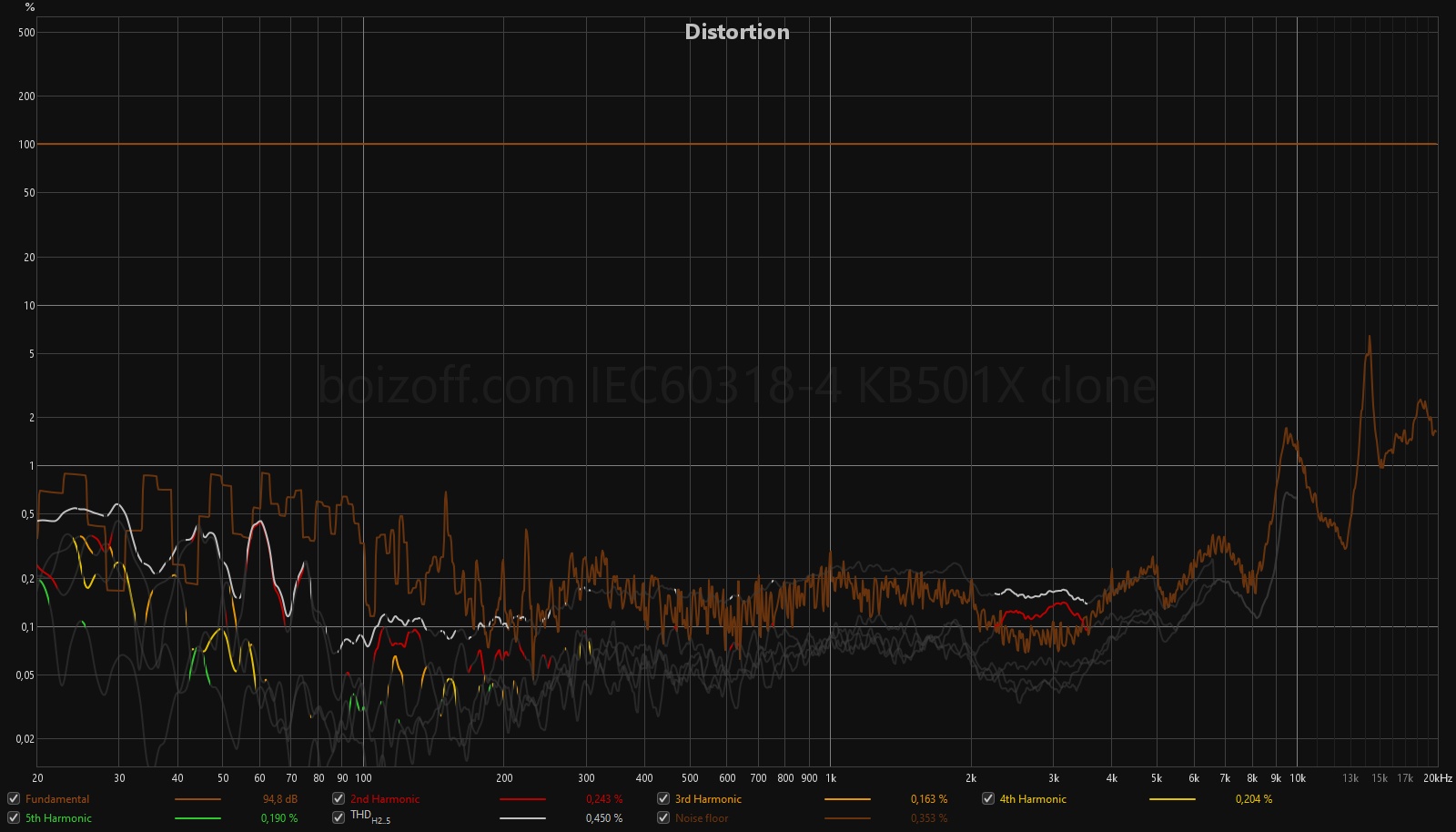
What’s the verdict? The new planar driver turned out to be objectively awesome.
The Arkona frequency response curve deviates from the neutral one in the bass section and has accents at frequencies of 5.2 and 7.8 kHz. It’s the first one that provides this loss of realistic sound in some tracks, which I described above. However, this is barely audible indeed and, besides, can be corrected by slightly turning the headphones forward. Otherwise, for closed-back headphones, the frequency response is excellent: the declines and rises are very smooth, the deviation from the target curve is only 2 dB at 700 Hz and 4 dB at about 100 Hz, that is, one and a half times the volume. The subbass is linear up to 40 Hz, the segment from 1 to 3 kHz even looks as if carbon-copied from the target curve, and the gain of the section around 12 kHz is responsible for sound voluminousness. Why do the headphones not get sandy or creak, why are there no sibilants? I have no idea. Let’s believe that this is the magic of the new driver.
Earpad choice
ECL-01, perforated leather ear cushions, are included:
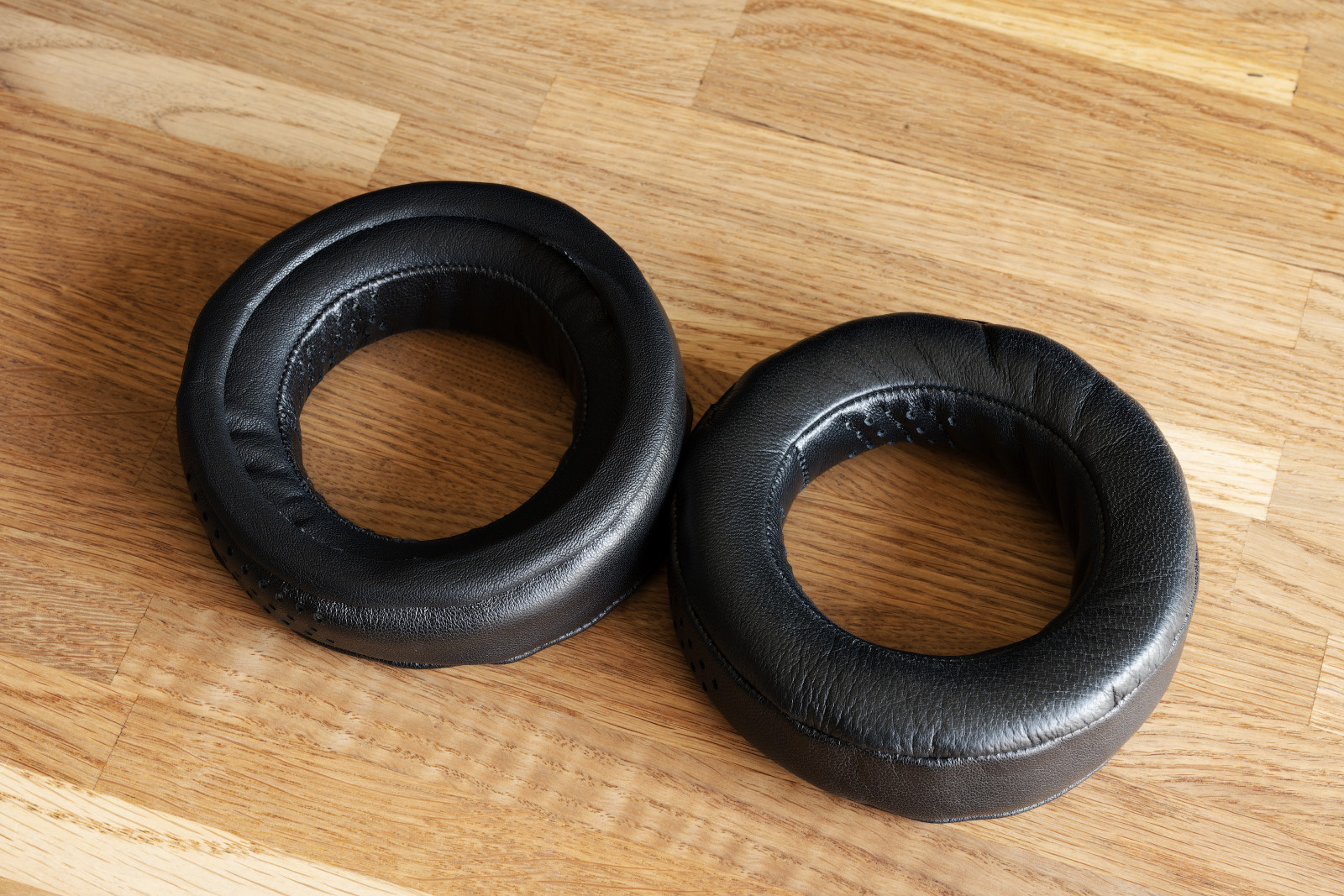
ECL-03, leather earpads without perforation, are also available:
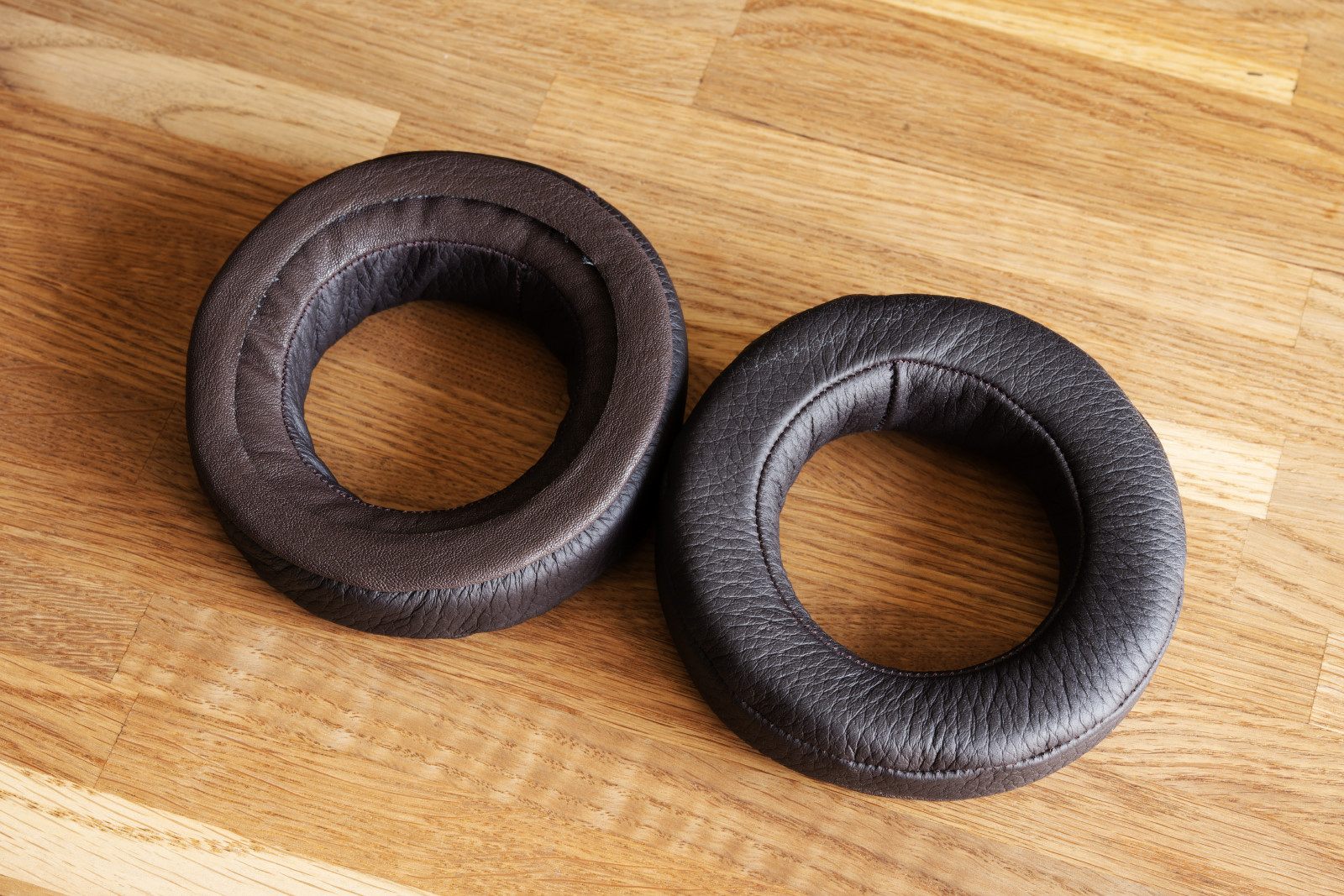
And there are also ECL-VL, thick velour earpads:
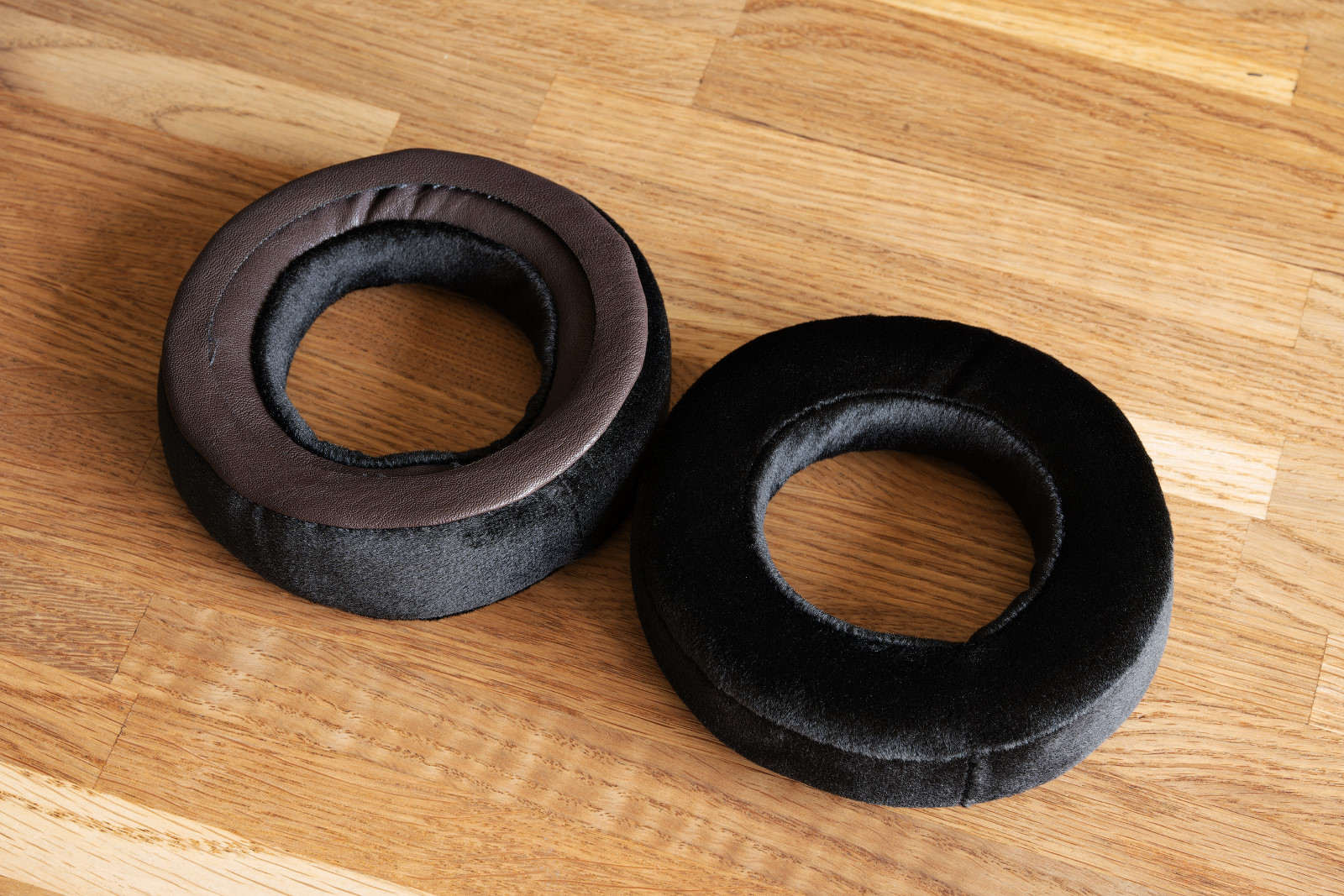
Frequency response measurements with all three types of earpads:
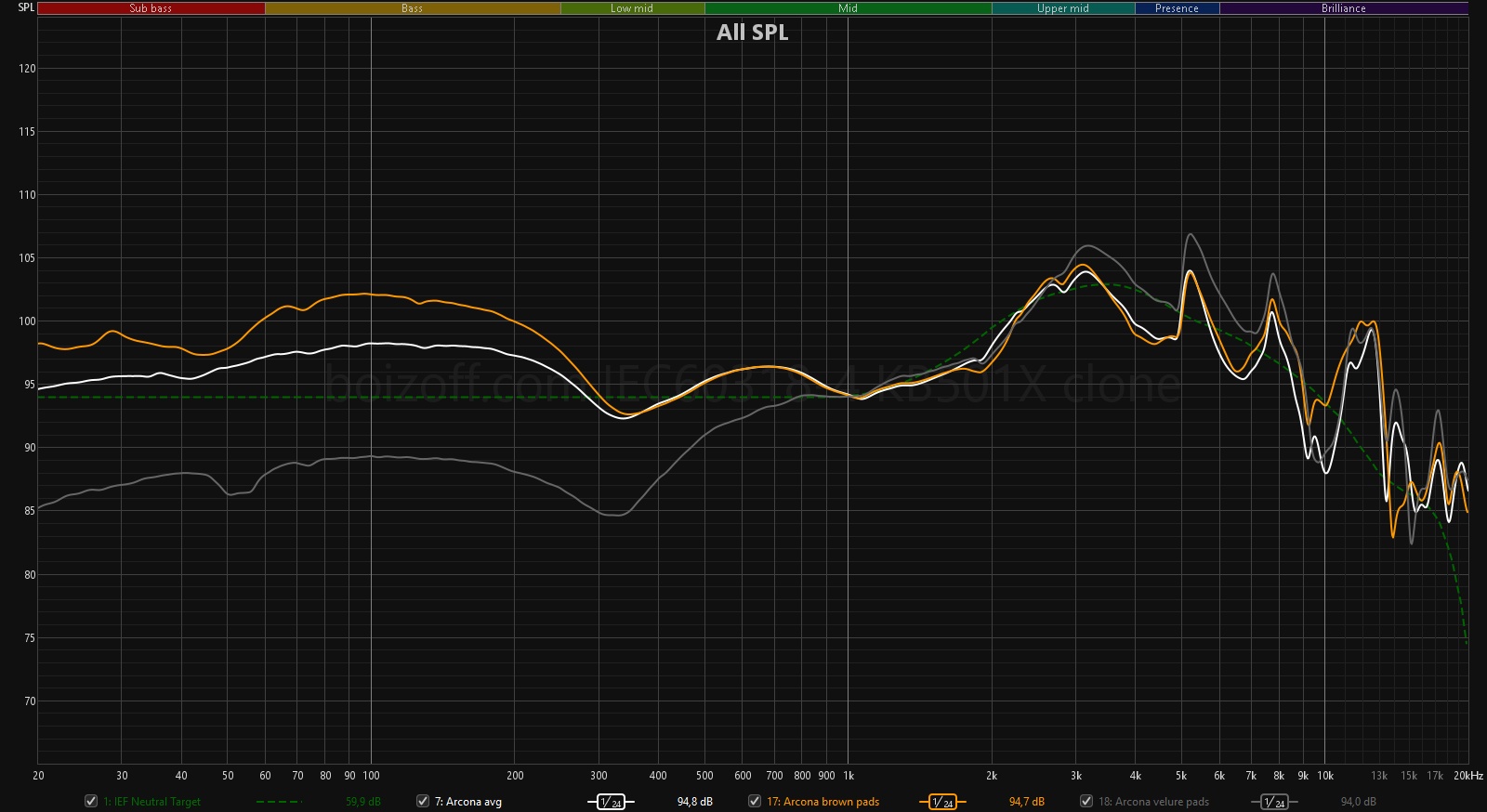
In other words, there’s no need to invent anything — use Arkona with its standard ECL-01.
Comparison: Arkona vs. Rognir
Currently, Rognir is Kennerton’s planar closed-back flagship device. And I didn’t write a review of this model because, from my point of view, these are very poorly tuned headphones. However, their sound is appreciated by a small number of people. But I don’t like to write reviews of what I don’t like.
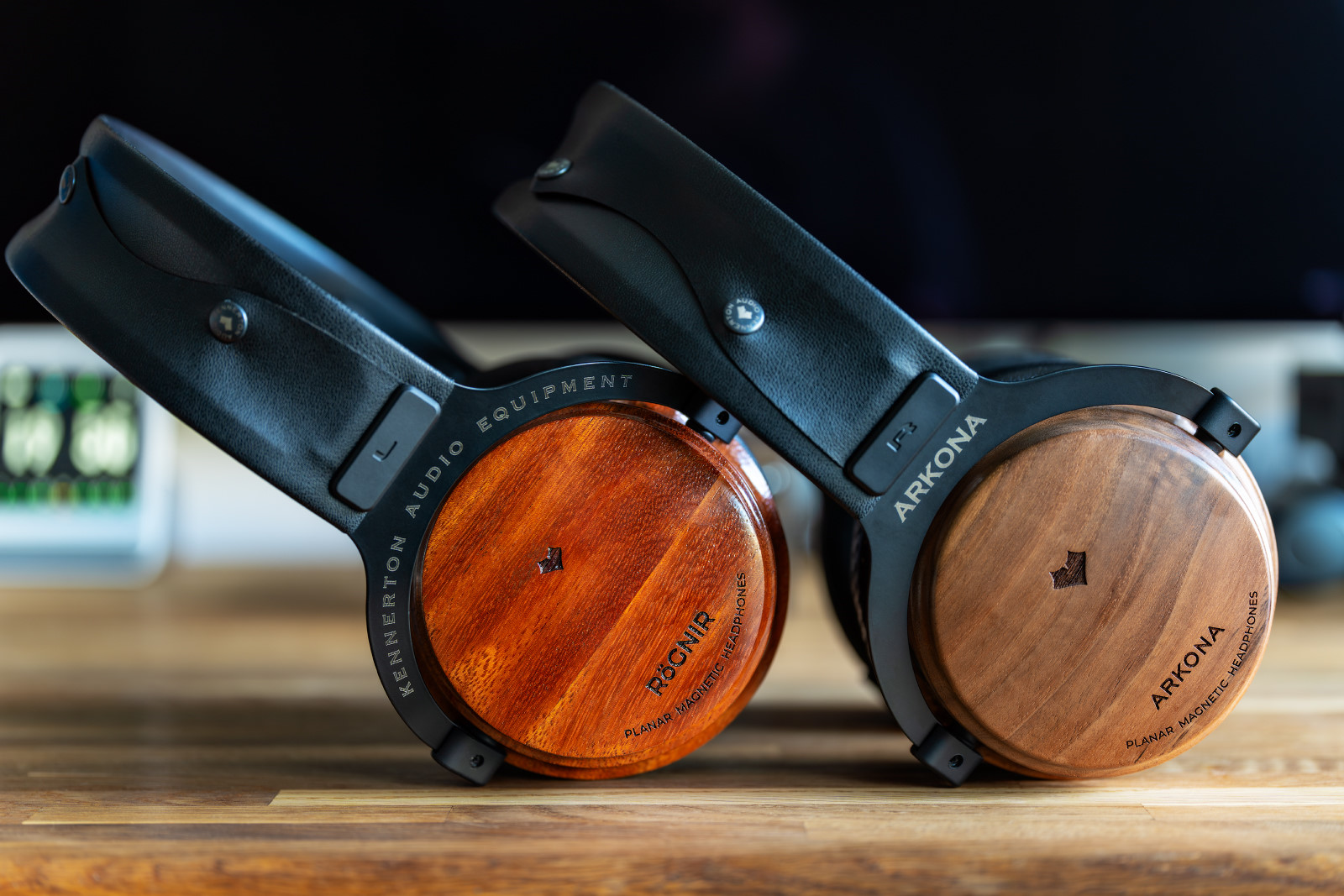
Rognir’s frequency response is abnormal in all segments of the sound range. They were used with ECL-01 earpads.
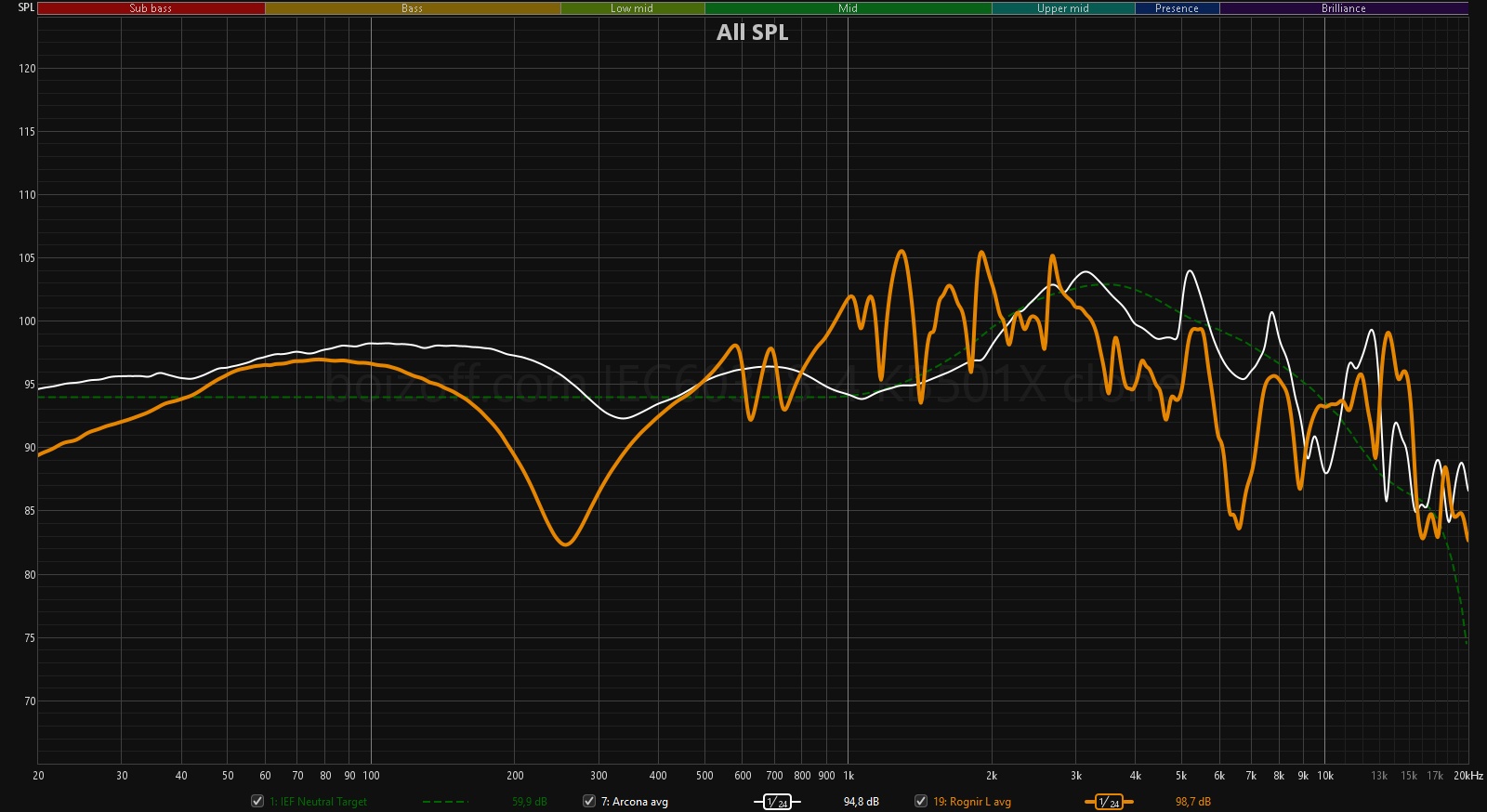
How should I comment on such measurements? The headphones with a yellow graph must be shit-canned, while the headphones with a white one should be kept and cherished.
Summary
I don’t like giving out such ‘medals’ as I haven’t tested a lot yet (for example, Dan Clark Audio E3 or ZMF Caldera Closed), but I really think that Kennerton Arkona are some of the best, if not the best closed-back headphones at all. As of June 2024, at least. I really don’t know any other closed-back headphones that sound so well.
To buy or not to buy: if you can afford it, yes, absolutely.
Well, and I’d like to sincerely congratulate Kennerton on the release of this model. Arkona is definitely both a milestone in the history of the company’s products and a generally significant event for the audio industry.
P.S. Now my personal rating of closed-back models looks as follows: AKG K361 → FiiO/JadeAudio JT1 → Audeze Maxwell → Fostex TH-610 → (space for something else) → Kennerton Arkona.

